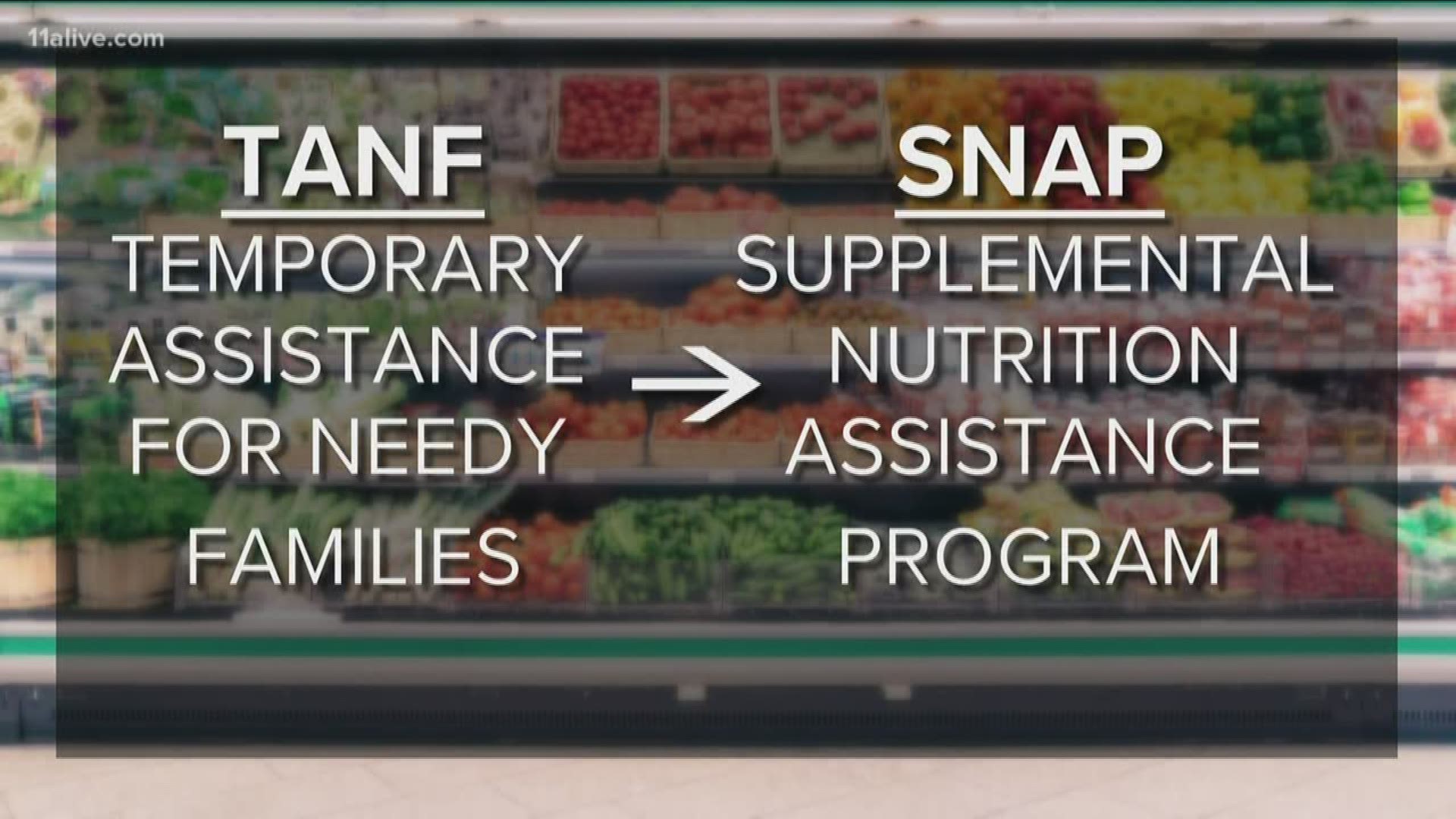ATLANTA — The federal government said Tuesday it is looking to restrict the automatic eligibility of potentially millions of people who receive "food stamp" benefits through their participation in Temporary Assistance for Needy Families (TANF) programs.
The U.S. Department of Agriculture (USDA) says the current rules give states too much leeway to place people on the Supplemental Nutrition Assistance Program (SNAP), the public benefit people commonly refer to as food stamps.
They're proposing tighter, more uniform standards.
The government says reforming the rules will save “billions of dollars” and ensure benefits are “delivered with consistency and integrity to those most in need."
Under current rules, people are automatically eligible to start receiving SNAP benefits if they already participate in TANF programs. Individual states determine how broadly they want to apply eligibility standards.
The USDA wants to make it so that across America, TANF households must receive a minimum of $50 in benefits for at least six months before becoming SNAP eligible. The USDA also wants to limit the kinds of non-cash benefits that would make a family SNAP eligible.
The federal government is making the case that states are allowing too many households to become automatically eligible for SNAP.
The USDA said that a family can currently become eligible for the program after receiving TANF assistance as minor as getting an informational brochure.
The agency cited one particular instance in which a self-described millionaire in Minnesota took advantage of the system to reveal its shortcomings. That man, Rob Undersander, said he qualified because of his lower retirement income and enrolled in SNAP to collect $6,000 in benefits across 19 months (he and his wife said they later donated that much money to charity).
The government did not estimate how many people could lose eligibility under the tighter restrictions, but said 3.1 million SNAP participants in 2020 will be eligible for the program "only because" of their state’s wider eligibility guidelines.
According to the Administration for Children and Families in the federal Department of Health & Human Services, 82.7 percent of 1,095,368 total TANF families were also on SNAP in the 2017 fiscal year, the most recent year for which there is an estimate.
That works out to 905,869 families on both programs.
According to federal data, the average SNAP household received $254.70 in monthly benefits in the 2017 fiscal year.
There were 11,532 TANF families in Georgia in the 2017 fiscal year, 70.7 percent of whom were also on SNAP.

